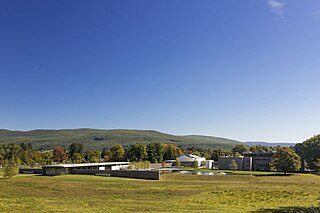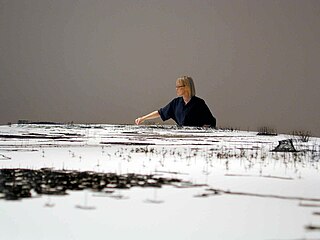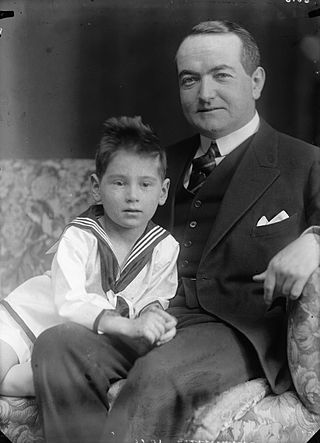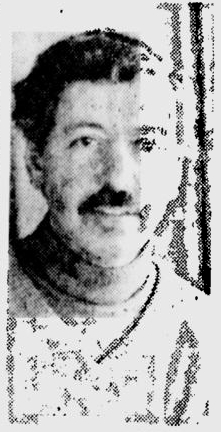Related Research Articles

The Museum of Fine Arts is an art museum in Boston, Massachusetts. It is the 20th-largest art museum in the world, measured by public gallery area. It contains 8,161 paintings and more than 450,000 works of art, making it one of the most comprehensive collections in the Americas. With more than 1.2 million visitors a year, it is the 79th-most-visited art museum in the world as of 2022.

The Carnegie Museum of Art is an art museum in the Oakland neighborhood of Pittsburgh, Pennsylvania. The museum was originally known as the Department of Fine Arts, Carnegie Institute and was formerly located at what is now the Main Branch of the Carnegie Library of Pittsburgh. The museum's first gallery was opened for public use on November 5, 1895. Over the years, the gallery vastly increased in size, with a new building on Forbes Avenue built in 1907. In 1963, the name was officially changed to Museum of Art, Carnegie Institute. The size of the gallery has tripled over time, and it was officially renamed in 1986 to "Carnegie Museum of Art" to indicate it clearly as one of the four Carnegie Museums.

The Sterling and Francine Clark Art Institute, commonly referred to as the Clark, is an art museum and research institution located in Williamstown, Massachusetts, United States. Its collection consists of European and American paintings, sculpture, prints, drawings, photographs, and decorative arts from the fourteenth to the early twentieth century. The Clark, along with the Massachusetts Museum of Contemporary Art and the Williams College Museum of Art (WCMA), forms a trio of art museums in the Berkshires. The institute also serves as a center for research and higher learning. It is home to various research and academic programs, which include the Fellowship Program and the Williams College Graduate Program in the History of Art, as well as one of the most distinguished research libraries in the country, with more than 295,000 volumes in over 72 languages. The Clark is visited by 200,000 people a year, and offers many educational programs for visitors of all ages throughout the year.

The Hispanic Society of America operates a museum and reference library for the study of the arts and cultures of Spain and Portugal and their former colonies in Latin America, the Spanish East Indies, and Portuguese India. Despite the name, it has never functioned as a learned society.

The Jack S. Blanton Museum of Art at the University of Texas at Austin is one of the largest university art museums in the U.S. with 189,340 square feet devoted to temporary exhibitions, permanent collection galleries, storage, administrative offices, classrooms, a print study room, an auditorium, shop, and cafe. The Blanton's permanent collection consists of more than 21,000 works, with significant holdings of modern and contemporary art, Latin American art, Old Master paintings, and prints and drawings from Europe, the United States, and Latin America.

The Art Institute of Chicago, founded in 1879, is one of the oldest and largest art museums in the United States. It is based in the Art Institute of Chicago Building in Chicago's Grant Park. Its collection, stewarded by 11 curatorial departments, includes works such as Georges Seurat's A Sunday on La Grande Jatte, Pablo Picasso's The Old Guitarist, Edward Hopper's Nighthawks, and Grant Wood's American Gothic. Its permanent collection of nearly 300,000 works of art is augmented by more than 30 special exhibitions mounted yearly that illuminate aspects of the collection and present curatorial and scientific research.
Paul Hambleton Landacre was an American artist based in Los Angeles. His artistic innovations and technical virtuosity gained wood engraving a foothold as a high art form in twentieth-century America. Landacre's linocuts and wood engravings of landscapes, still lifes, nudes, and abstractions are acclaimed for the beauty of their designs and a mastery of materials. He used the finest inks and imported handmade Japanese papers and, with a few exceptions, printed his wood engravings in his studio on a nineteenth-century Washington Hand Press, which is now in the collection of the International Printing Museum in Carson, California.
Anne Julie d'Harnoncourt was an American curator, museum director, and art historian specializing in modern art. She was the director and CEO of the Philadelphia Museum of Art (PMA), a post she held from 1982 until her sudden death in 2008. She was also an expert scholar on the works of French artist Marcel Duchamp.

Anne Wilson is a Chicago-based visual artist. Wilson creates sculpture, drawings, Internet projects, photography, performance, and DVD stop motion animations employing table linens, bed sheets, human hair, lace, thread and wire. Her work extends the traditional processes of fiber art to other media. Wilson is a professor in the Department of Fiber and Material Studies at The School of the Art Institute of Chicago.

Friedrich Bernhard Eugen "Fritz" Gutmann was a Dutch banker and art collector. A convert from Judaism, he and his wife were murdered by the Nazis in 1944, and parts of his art collection stolen by the German occupying forces. The collection and the fate of Fritz Gutmann is described by his grandson, Simon Goodman, in the 2015 book The Orpheus Clock.
Anne Collier is an American visual artist working with appropriated photographic images. Describing Collier's work in Frieze art magazine, writer Brian Dillon said, "Collier uncouples the machinery of appropriation so that her found images seem weightless, holding their obvious meaning in abeyance."

Betty Merken is an American painter and printmaker who lives and works in Seattle, Washington.

Daniel J. Robbins was an American art historian, art critic, and curator, who specialized in avant-garde 20th-century art and helped encourage the study of it. Robbins' area of scholarship was on the theoretical and philosophical origins of Cubism. His writings centered on the importance of artists such as Albert Gleizes, Jean Metzinger, Henri Le Fauconnier and Jacques Villon. He was a specialist in early Modernism, writing on Salon Cubists and championed contemporaries such as Louise Bourgeois and the Color Field painters. Art historian Peter Brooke referred to Robbins as "the great pioneer of the broader history of Cubism".

Linda Weintraub is an American art writer, educator and curator. She has written several books on contemporary art. Her most recent works address environmental consciousness that defines the ways cultures approach art, science, ethics, philosophy, politics, manufacturing, and architecture.

Marion Boulton Stroud, also known as Marion Stroud Swingle was an American curator, author, and museum director who was particularly active in her support of contemporary art, and of the use of textiles as a medium. She was the founder and director of The Fabric Workshop and Museum in Philadelphia, Pennsylvania, and a trustee and active supporter of the Philadelphia Museum of Art. She is commonly referred to as "Kippy".
Anne Litle Poulet is a retired American art historian. Poulet is an expert in the area of French art, particularly sculpture. In her career, she organized two major monographic exhibitions on the French sculptors Clodion and Jean-Antoine Houdon, respectively.
Lauren Fensterstock is an American artist, writer, curator, critic, and educator living and working in Portland, Maine. Fensterstock’s work has been widely shown nationally at venues such as the John Michael Kohler Art Center (WI), the Bowdoin College Museum of Art (ME), the Portland Museum of Art (ME), and is held in public and private collections throughout the U.S, Europe, and Asia.
Matthew McLendon is an American museum director, art historian, and curator of modern and contemporary art. McLendon serves as Director and CEO of the McNay Art Museum in San Antonio, Texas.

Nyeema Morgan is an American interdisciplinary and conceptual artist. Working in drawing, sculpture and print media, her works focus on how meaning is constructed and communicated given complex socio-political systems. Born in Philadelphia, she earned her BFA from the Cooper Union School of Art and her MFA from the California College of the Arts. She has held artist residencies at the Skowhegan School of Painting and Sculpture and Smack Mellon. Morgan's works are in the permanent collections of the Bowdoin College Museum of Art and the Menil Collection.
Alison "Ali" Gass is an American curator and museum director. She is the founding director of the Institute of Contemporary Art San Francisco. She has served as the director of the Institute of Contemporary Art San José, Smart Museum of Art, and chief curator of the Cantor Arts Center at Stanford University.
References
- ↑ "Kevin Salatino". The Art Institute of Chicago. Retrieved 2022-07-14.
- 1 2 Artdaily. "Kevin Salatino named the Huntington's Director of Art Collections". artdaily.cc. Retrieved 2022-07-14.
- 1 2 3 Boehm, Mike (February 10, 2012). "Huntington picks Kevin Salatino to head its art collections". Los Angeles Times. Retrieved July 14, 2022.
- 1 2 "Kevin Salatino - CCL Class of 2009". Center for Curatorial Leadership. Retrieved 2022-07-14.
- ↑ "Kevin Salatino named director of Bowdoin College Museuem of Art". ArtForum. 21 April 2009. Retrieved July 14, 2022.
- ↑ Writer, Bob KeyesStaff (2012-02-11). "Bowdoin's museum chief is leaving job". Press Herald. Retrieved 2022-07-14.
- ↑ Writer, Bob KeyesStaff (2012-02-10). "Bowdoin Museum director takes West Coast job". Press Herald. Retrieved 2022-07-14.
- 1 2 "Art Institute of Chicago Appoints Kevin Salatino as the New Anne Vogt Fuller and Marion Titus Searle Chair and Curator of Prints and Drawings". The Art Institute of Chicago. Retrieved 2022-07-14.
- ↑ "Chasing Casanova". www.bgc.bard.edu. Retrieved 2022-07-14.